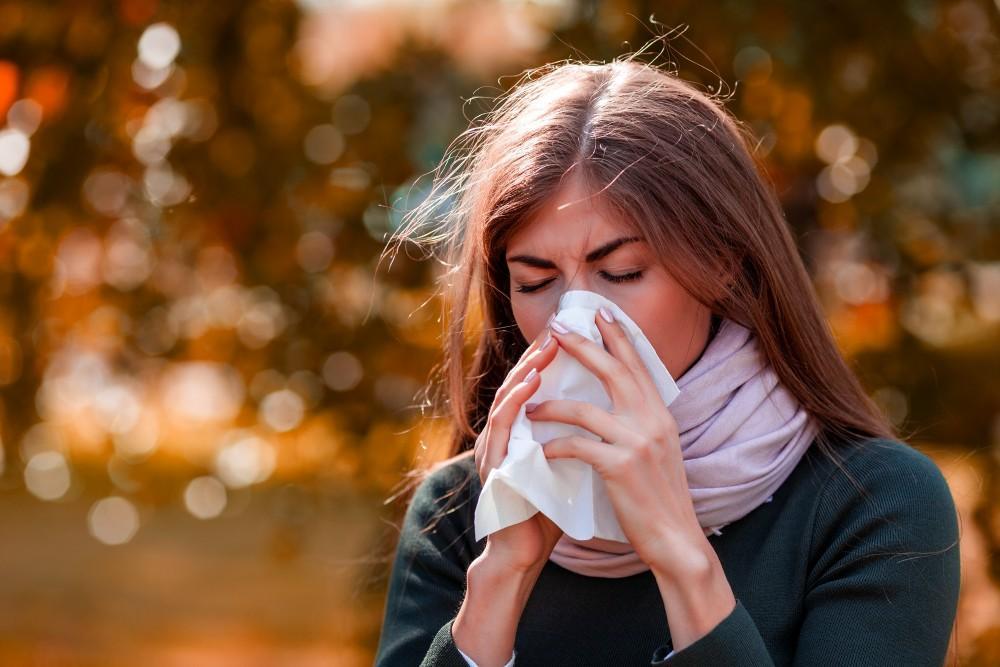About 24 million Americans are diagnosed with seasonal allergies, including autumn allergies triggered by pollen, mold spores, and indoor air pollutants.
If you’re one of those millions, taking a few extra precautions could mean the difference between suffering through the fall months and enjoying them.
As a leading primary care doctor in Southern California, Michael Bazel, MD, helps patients of all ages learn simple strategies for minimizing allergy symptoms during the fall and all year round. Here are nine allergy-taming tricks that just might help you keep your symptoms under control.
Manage outdoor exposures
Cooler, clearer fall weather is hard to resist, but the great outdoors is also home to plenty of allergens, including billions of spores and pollen particles just waiting to trigger a sneezing fit. If you can, avoid yard work until later in the season, and check your local pollen count before heading out.
Buy some bedding
Fall is a good time to update your linens to something cozier for cool weather. Look for hypoallergenic materials for your sheets, comforter, and pillows. Add in a mattress cover to help keep dust mite populations down, and you’re all set.
Invest in a HEPA vacuum
Like spring, fall is also traditionally the time for deep-cleaning. And as luck would have it, it’s also a time for pre-holiday sales. That means now is a good time to consider upgrading your old vacuum to a new model with HEPA filtration and other technology aimed at removing more dust particles (and pet dander) from your carpets and furniture.
Be prepared
Keep your medicine cabinet stocked with allergy medicines so you’re ready the next time your symptoms flare up. Carry allergy medicines with you, too, so you’ll always be prepared.
Just know that all allergy medicines aren’t the same. To find the best one for you, give our office a call to schedule an allergy consultation.
Clean your vents
When the cooler weather hits, it’s time to crank up the thermostat. Before turning on your furnace for the first time, change the filters and have your ducts cleaned. Or at least look for products that allow you to reach deep into your ducts to gather dust and particles.
Speaking of filters …
Set a reminder on your phone or calendar to change furnace filters on a regular basis. Those filters play a big role in trapping particles and preventing them from becoming airborne.
Your filter manual will tell you how often filter changes are recommended. Keep some filters on hand to make it more convenient.
Skip the wood fires
Whether you have a fireplace in your living room or an open fire pit in your backyard, burning wood creates smoke that can trigger allergies — and dangerous asthma attacks, too.
In fact, wood smoke poses a number of potential health problems, especially if your home isn’t well-ventilated.
Consider a dehumidifier
Mold and mildew spores and dust mites are major causes of allergies, and they’re also big fans of moist air. Use a dehumidifier to dry out your air, which can help keep these allergens under control.
Look into prescription products
There are lots of over-the-counter products that can help with allergy symptoms, especially when combined with the tips in this list. But sometimes, you need something more. If your allergy symptoms just won’t go away, ask Dr. Bazel about prescription products that could help.
Don’t let allergy symptoms ruin your fall fun. To learn what else you can do to tame your allergies — and how we can help — book an appointment with Dr. Bazel online or over the phone today. Our offices are located in Bell, Panorama City, and Valley Village, California, in the greater Los Angeles area.


